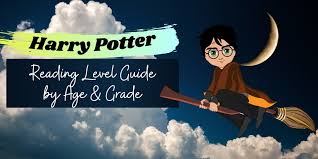The Harry Potter series by J.K. Rowling has captivated readers worldwide since its debut in 1997. The magical journey of Harry, Hermione, and Ron has enchanted both children and adults alike. However, while the series starts with a relatively simple narrative suitable for younger readers, it gradually introduces darker themes and more complex language. This progression makes it essential to understand the appropriate reading levels for each book in the series.
Reading Levels and Age Recommendations
The Harry Potter books are often classified as middle-grade to young-adult literature. However, their readability and thematic content change as the series progresses. Here’s a breakdown of the recommended reading ages, grade levels, and reading metrics:
- Harry Potter and the Sorcerer’s Stone
- Recommended Age: 8-12
- Grade Level: 3-7
- Lexile Measure: 880L
- Word Count: 77,000
- AR Points: 12
- Harry Potter and the Chamber of Secrets
- Recommended Age: 8-12
- Grade Level: 3-7
- Lexile Measure: 940L
- Word Count: 85,000
- AR Points: 14
- Harry Potter and the Prisoner of Azkaban
- Recommended Age: 9-13
- Grade Level: 4-8
- Lexile Measure: 880L
- Word Count: 107,000
- AR Points: 18
- Harry Potter and the Goblet of Fire
- Recommended Age: 10-14
- Grade Level: 5-9
- Lexile Measure: 880L
- Word Count: 190,000
- AR Points: 32
- Harry Potter and the Order of the Phoenix
- Recommended Age: 11-15
- Grade Level: 6-10
- Lexile Measure: 950L
- Word Count: 257,000
- AR Points: 44
- Harry Potter and the Half-Blood Prince
- Recommended Age: 12-16
- Grade Level: 7-11
- Lexile Measure: 1030L
- Word Count: 168,000
- AR Points: 29
- Harry Potter and the Deathly Hallows
- Recommended Age: 13+
- Grade Level: 8+
- Lexile Measure: 980L
- Word Count: 198,000
- AR Points: 34
From the Harry Potter Reading Levels listed above, it is clear that while younger readers can enjoy the first few books, the later installments require a higher reading level and greater emotional maturity due to their darker themes.
Additional Books in the Wizarding World
Beyond the main Harry Potter series, there are additional books that expand the magical universe. These books have different reading levels and target audiences:
- Fantastic Beasts and Where to Find Them (Companion Guide)
- Recommended Age: 8+
- Grade Level: 4+
- Lexile Measure: 1180L
- A fictional textbook detailing magical creatures, written in an encyclopedia-style format.
- Quidditch Through the Ages (Companion Guide)
- Recommended Age: 8+
- Grade Level: 4+
- Lexile Measure: 1200L
- A humorous guide to the history and rules of Quidditch.
- The Tales of Beedle the Bard (Companion Story Collection)
- Recommended Age: 8+
- Grade Level: 4+
- Lexile Measure: 870L
- A collection of wizarding fairy tales with moral lessons.
- Harry Potter and the Cursed Child (Play Script)
- Recommended Age: 12+
- Grade Level: 7+
- Lexile Measure: 980L
- Written as a script, this book follows the next generation of wizards and explores time travel and legacy.
Factors That Influence Reading Level Appropriateness
Several factors determine whether a child is ready to read a particular Harry Potter book:
1. Thematic Content
- The series begins with a whimsical adventure filled with friendship and bravery.
- As Harry grows older, the themes become increasingly mature.
- Later books explore complex issues like political corruption, loss, betrayal, and even death.
- Parents should be aware of these themes and consider if their child is emotionally prepared to handle them.
2. Writing Complexity
J.K. Rowling’s writing style evolves throughout the series:
- Sorcerer’s Stone has a simple, accessible narrative with shorter sentences.
- Order of the Phoenix features a sophisticated vocabulary and intricate subplots.
- Deathly Hallows presents a dark, complex storyline with moral dilemmas.
3. Book Length and Structure
- The books progressively increase in length, requiring stronger reading stamina.
- Younger readers might find the later books overwhelming due to their complexity and length.
Comparison to Other Popular Series
For context, here’s how Harry Potter compares to other fantasy series in terms of reading level:
- Harry Potter: Starting Lexile – 880L, Final Lexile – 1030L
- Percy Jackson & the Olympians: Starting Lexile – 620L, Final Lexile – 780L
- The Chronicles of Narnia: Starting Lexile – 870L, Final Lexile – 970L
- The Hobbit: Starting Lexile – 1000L, Final Lexile – 1000L
Compared to Percy Jackson, Harry Potter has a more advanced vocabulary and intricate plots, making it more suitable for upper elementary to middle school readers.
How Parents and Educators Can Guide Young Readers
Since every child develops at a different pace, parents and educators should assess individual readiness before allowing them to progress through the series. Here are some ways to support young readers:
- Assess Individual Reading Ability: While age recommendations are helpful, children’s reading levels can vary. Some may be ready for the later books earlier, while others may need more time.
- Encourage Open Discussions: Engaging young readers in discussions about the themes in the book helps them process complex ideas and emotions.
- Monitor Progression: Instead of rushing through the series, children should take their time to absorb each book fully. This ensures they understand and appreciate the story without feeling overwhelmed.
- Read Together: If parents are concerned about their child reading a particular book too soon, they can read alongside them and address any challenging topics as they arise.
Final Thoughts
The Harry Potter series offers an incredible reading experience that grows with its readers. By considering reading difficulty, thematic maturity, and emotional readiness, parents and educators can help children embark on their magical journey through Hogwarts at the right time. After all, the world of Harry Potter is best enjoyed when the reader is ready to fully embrace its magic.
